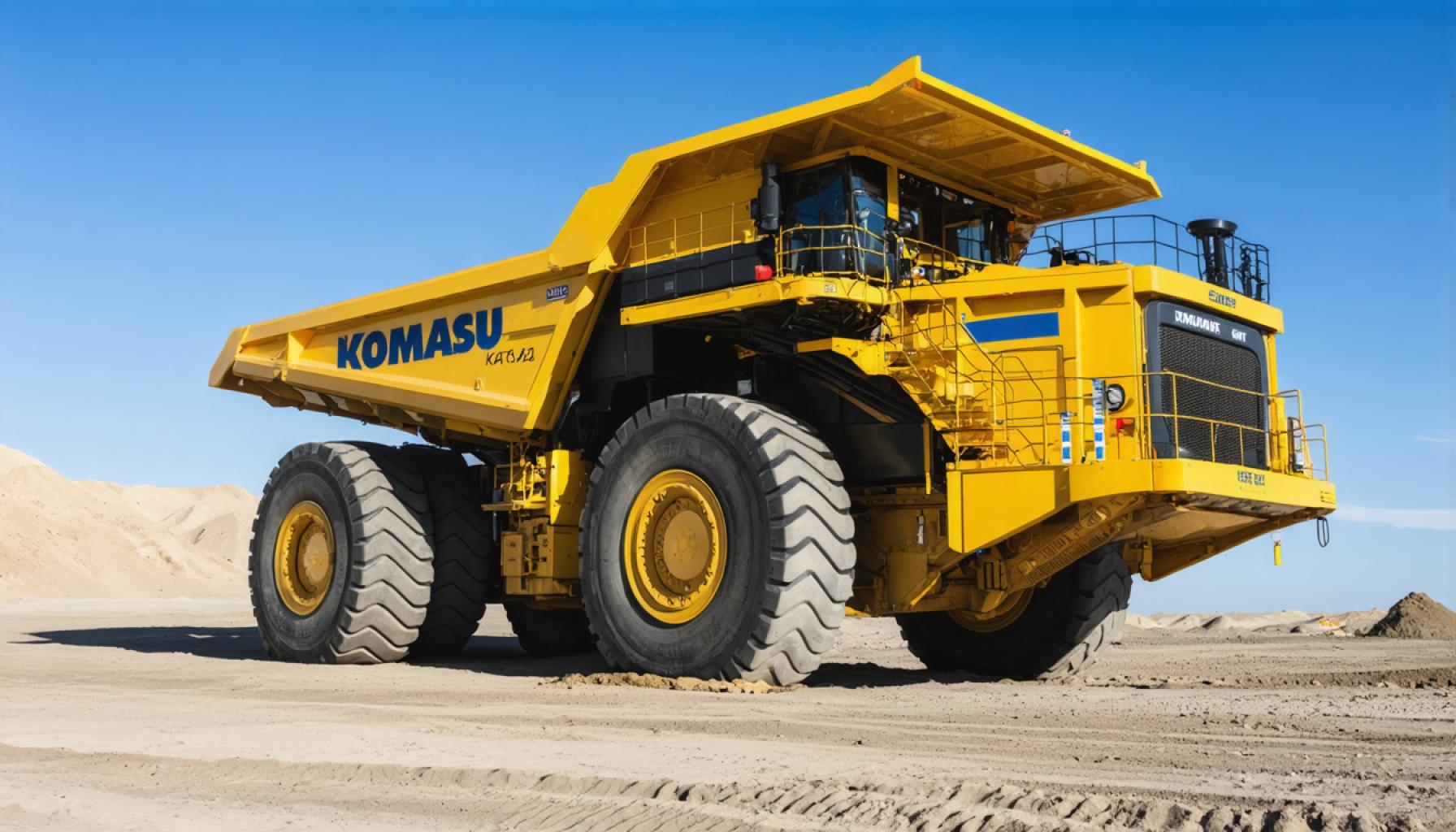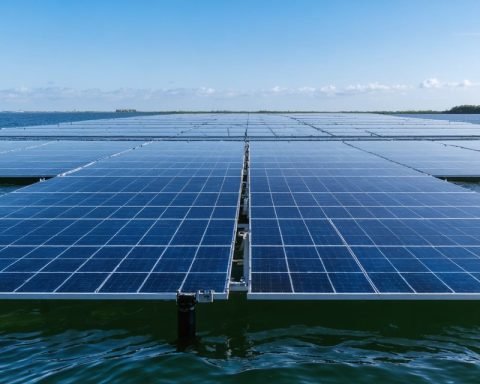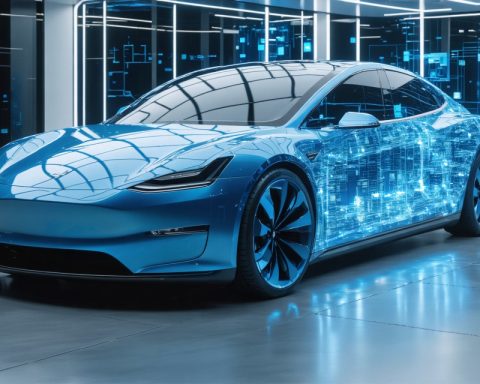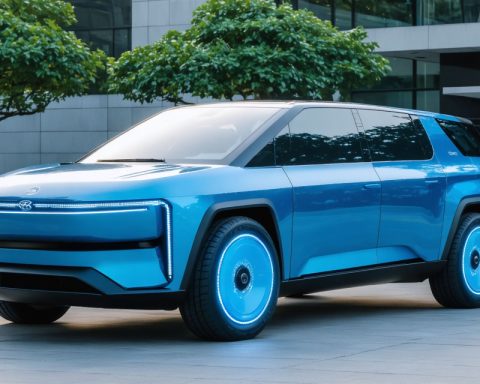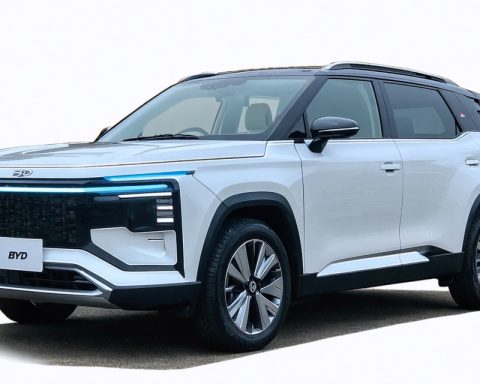- Komatsu’s plant in Ibaraki, Japan, houses a pioneering hydrogen combustion dump truck, claiming the title of the world’s first of its kind.
- This innovative truck can carry a 92-metric-ton payload and rivals diesel engines with its hydrogen-powered 1,200 horsepower.
- Unlike fuel cells, it directly burns hydrogen, resulting in zero emissions, only releasing water vapor.
- Collaborations, such as with Germany’s KEYOU, enable conversion from diesel to hydrogen, leveraging existing engine designs.
- The truck integrates advanced safety features, including cameras and monitors, while maintaining operator visibility with a strategically placed hydrogen tank.
- Challenges include developing hydrogen infrastructure and ensuring safety, necessitating collaborative industry efforts.
- Performance trials aim to showcase potential, suggesting a transformative future for the construction and mining industries through sustainable practices.
Amidst the lush landscapes of Ibaraki, Japan, something monumental hums within Komatsu’s vast plant. A beast of engineering, a massive dump truck, equipped not with a conventional engine but a groundbreaking hydrogen combustion system, stands ready for its trial by fire. This is no ordinary machine; it carries the bold claim of being the world’s first hydrogen-driven giant on wheels.
The truck boasts a colossal 92-metric-ton payload, challenging its diesel predecessor’s mighty 1,200 horsepower with clean, hydrogen-fueled might. Unlike hydrogen fuel cells, which quietly transform hydrogen into electricity, this roaring engine burns hydrogen directly, marrying the familiar with the futuristic. The result? A powerhouse emitting nothing but water vapor, as innocent as a whisper.
Strategic partnerships fuel Komatsu’s innovation, notably with Germany’s KEYOU, a startup adept at morphing diesel beasts into hydrogen marvels. Komatsu’s system defies the costly conventions of battery and fuel-cell approaches, without discarding existing powertrain designs. Cameras and monitors cocoon the driver’s seat, enhancing safety, while a cleverly placed hydrogen tank maximizes capacity without hampering operator visibility.
Yet, the path forward isn’t without hurdles. Challenges like hydrogen infrastructure and safety loom large, demanding collaborative efforts across industry realms. Still, the promise of nearly zero pollution and sustainable workforces invigorates the mission, paving roads once deemed impossible.
By testing performance, endurance, and safety in real-world conditions, Komatsu forges a path into a cleaner, greener future. With industry giants rallying around hydrogen’s potential, the construction and mining sectors stand on the brink of transformation, redefining what it means to build our world.
Revolutionary Hydrogen-Powered Dump Truck: A Glimpse of the Future in Heavy Machinery
Introduction
The introduction of hydrogen technology in heavy machinery, exemplified by Komatsu’s innovative hydrogen-powered dump truck, marks a significant shift in energy usage within construction and mining industries. By transforming a traditional diesel-powered behemoth into an eco-friendly powerhouse, Komatsu not only challenges established conventions but also opens the door to sustainable industrial practices. This article explores the less visible but equally important aspects of this technological advancement, including feasibility, market projections, and potential challenges.
How Hydrogen-Powered Dump Trucks Work
Komatsu’s hydrogen combustion system is distinct from standard hydrogen fuel cells. While fuel cells convert hydrogen into electricity, powering motors quietly and efficiently, Komatsu’s approach burns hydrogen directly in a modified internal combustion engine. This method leverages existing technologies and expertise, offering a less disruptive transition for manufacturers and operators who are already familiar with conventional engines.
Features, Specs, and Pricing
– Payload Capacity: 92 metric tons
– Power Output: Equivalent to or surpassing 1,200 horsepower
– Emission: Produces only water vapor as a by-product
– Safety Features: Equipped with cameras and monitors to enhance driver safety
– Infrastructure Requirements: Utilizes hydrogen refueling stations, which are still in their developmental stages globally
The pricing for such groundbreaking technology varies depending on specific adaptations and market conditions. Initial costs are likely higher than traditional diesel trucks due to the novelty and limited scale of hydrogen tech.
Real-World Use Cases
In industries such as mining and construction, where heavy machinery contributes significantly to carbon emissions, hydrogen-powered vehicles offer a potential pathway to sustainability. Companies emphasizing green credentials can benefit from these trucks. Moreover, operation in remote areas that lack electric grid infrastructure might find hydrogen refueling a more viable alternative compared to battery-electric vehicles.
Market Forecasts and Industry Trends
Hydrogen energy is gaining traction, with major economies investing in infrastructure and development. According to the Hydrogen Council, hydrogen could account for 18% of total energy consumption by 2050. For construction and mining sectors, this transition promises new market dynamics as regulations and consumer expectations increasingly favor sustainability.
Controversies and Limitations
Key challenges include:
– Infrastructure Development: As of now, hydrogen refueling infrastructure is sparse and often located in closer proximity to urban centers than rural areas where such machinery is typically deployed.
– Safety Concerns: Hydrogen, though clean to burn, is highly flammable. Establishing robust safety protocols is essential to prevent accidents.
– Economic Viability: Current costs of hydrogen production and distribution remain high.
Sustainable Solutions and Security
Utilizing green hydrogen—produced from renewable energy sources such as wind or solar—can enhance the environmental benefits of these trucks. Moreover, ensuring secure supply chains and infrastructure is crucial for deployment success.
Pros and Cons Overview
– Pros: Zero-emissions, use of existing technology and infrastructure, significant reduction in carbon footprint, potential reductions in operational costs.
– Cons: High upfront costs, limited refueling infrastructure, potential safety risks.
Conclusion and Recommendations
The future of construction and mining industries is poised for transformation with hydrogen technology. Companies investing early in such innovations stand to benefit not only economically but reputationally as well. Potential adopters should:
1. Analyze infrastructure availability in operational regions.
2. Consider incremental adaptation strategies, blending current technologies with new investments.
3. Monitor evolving safety standards and regulations closely to ensure compliance.
For further information on heavy machinery innovation trends, visit Komatsu. Using this knowledge, readers can make informed decisions about adopting cleaner, more sustainable technologies in their operations.
